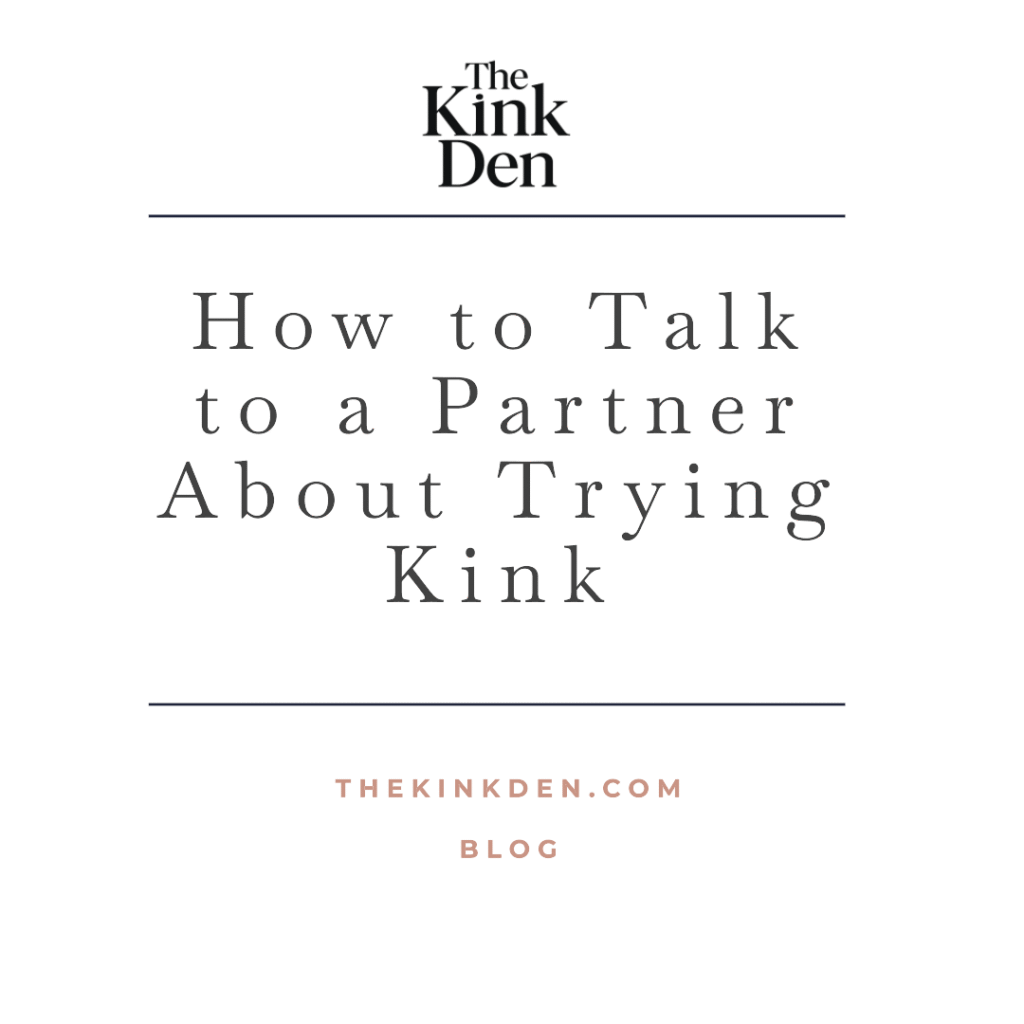Bringing up kink with a partner can feel like walking a tightrope-vulnerable, uncertain, and high stakes. Whether it’s bondage, impact play, power exchange, or something uniquely yours, the fear of being judged or rejected can keep your desires tucked away in silence. But here’s the truth: honest, respectful communication is at the heart of healthy kink-and it starts with that first conversation.
This guide is for anyone who’s felt nervous about sharing their kink desires with a partner. It’s not about scripts or seduction. It’s about creating safety, connection, and curiosity-because that’s where real consent begins.
Start with Self-Reflection
Before opening the conversation, check in with yourself. What are you curious about? What draws you to kink-sensation, power, intimacy, submission, control? Knowing your own “why” helps you express your interest clearly and confidently.
- Is this a desire for exploration or a deep part of your identity?
- Are there specific activities or dynamics you’re drawn to?
- How do you hope kink might strengthen intimacy or trust?
The more clarity you bring to the table, the more grounded and open the conversation will feel-for both of you.
Choose the Right Moment
Timing matters. Don’t spring the conversation on your partner during sex, a stressful moment, or in the middle of an unrelated argument. Choose a calm, private time when you’re both relaxed and emotionally available.
Helpful tip: Frame the topic with curiosity, not urgency. You’re not issuing a demand-you’re opening a door.
“I’ve been exploring more about intimacy lately, and I came across something that really piqued my interest. Would you be open to chatting about it sometime soon?”
Lead with Vulnerability, Not Shock Value
It can be tempting to jump straight into specifics-“I want to be tied up and called names”-but that can feel overwhelming to someone new to kink. Start instead with how the interest makes you feel.
- “This is something that excites me, but I’ve been nervous to share it.”
- “It makes me feel connected and safe in a really unique way.”
- “I trust you, and I wanted to share this part of myself.”
This centres the conversation in intimacy, not shock-and helps your partner respond with curiosity instead of defensiveness.
Be Ready for Questions (or Silence)
Your partner might be intrigued, confused, uncertain-or all three. They may not respond immediately, and that’s okay. Allow space for processing, and resist the urge to over-explain or apologise for your desires.
If they ask questions, answer honestly but gently. Share articles, guides, or blogs (like The Kink Den) that demystify kink and focus on consent, trust, and communication-not just acts or aesthetics.
Use “Would You Ever…” Language
If you’re unsure how to bring up a specific kink or fantasy, try framing it as a gentle “what if” rather than a statement of intent. It makes the conversation collaborative, not confrontational.
“Would you ever be open to trying something like blindfolds or restraint?”
“How would you feel about exploring a little light power play?”
“Would it interest you if we added a bit of a dominant and submissive dynamic?”
This invites dialogue, rather than pressure. And it creates room for imagination without the need for immediate commitment.
Offer Resources, Not Pressure
If your partner is open but uncertain, offer to explore the topic together. Read articles. Watch educational videos. Sign up to our newsletter to download our free BDSM Beginner Guide and walk through the basics as a team. Learning together can turn nervousness into excitement-and builds trust along the way.
Remind your partner they never have to participate in anything that doesn’t feel right. Consent means choice, not obligation. Your job is to share, not to convince.
Respect a No-but Clarify What It Means
If your partner says no, stay calm and respectful. A “no” doesn’t mean “you’re disgusting.” It might mean:
- They’re unfamiliar with kink and need time
- They’ve had negative past experiences
- They’re unsure how it might affect the relationship dynamic
Ask if they’re open to revisiting the conversation in future, or if they’d like to learn more at their own pace. And if the answer is a hard no, respect it. It’s possible to have a beautiful, fulfilling relationship even if all your fantasies aren’t shared-but if kink is a core need, it’s also okay to explore that outside the current dynamic, with respect and communication.
Celebrate Small Yeses
Sometimes a partner won’t be ready to dive in headfirst-but they might be open to dipping a toe. Celebrate that. Baby steps count.
- Maybe they try blindfolding you for the first time
- Maybe you negotiate a short power-exchange scene with clear rules
- Maybe you just use “sir” or “babygirl” in bed to test the dynamic
Small moments can unlock deeper desires over time. And they build trust faster than pressure ever could.
Final Thoughts
Talking about kink with a partner can feel scary-but it’s also incredibly brave. You’re not just asking for pleasure. You’re asking to be seen, understood, and loved in your fullest expression. That’s beautiful. And worth every awkward pause or nervous breath.
The Kink Den exists to support you in these exact moments-with tools, language, and real-world guidance to help you build a kink-positive life rooted in consent, respect, and authenticity.
Need help getting started? Get our free BDSM Beginner Guide when you sign up to our newsletter -it’s packed with consent tips, negotiation tools, and scene ideas to explore safely with your partner.
Your desires are valid. Your voice matters. And your next great conversation? It might just lead to something extraordinary.




